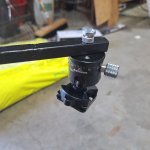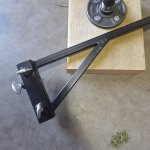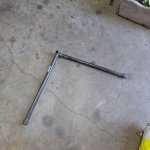OP, if you are going to utilize your spotting scope for multiple viewing options, such as range targets, astronomy, window gazing, you need a good quality scope that will show sharp images under all lighting conditions.
A cheaper model may not give you the sharpness or even a viewable image under poor lighting conditions.
The Leupold, was good, as were the Browning and Burris, but the Leica, which came in second place, was better, and the Swarovski was best, not by much but "visibly" better under all conditions I was concerned with, it was a 15-30x60mm.
If you're only interested in shooting at the range, all you really need is a scope that is capable of showing your shot impacts with enough clarity to see them, at the ranges you will be shooting. The image quality should be good enough to distinguish between a bug and a bullet hole.
I use a very sturdy tripod, behind the bench or on a vacant bench, to view my shots. This is just my preference. Some of the rigs shown for viewing while sitting in place could appeal to a lot of people.
When it comes to spotting scopes, you not only need to be concerned with the quality of the lenses, for sharpness and light transmission, but the size of the scope lenses. Large "objective" lenses allow for better light transmission as long as the body of the scope is large enough to allow more, etc. Then you have to be concerned with the "ocular" lens, which should also be quite large, at least 15+mm.
Larger ocular lenses make image acquisition easier, allow for much less image distortion, and allow for a larger image overall.
Not all scopes, even from the same manufacturer, of the same grade, are created equal. They're mostly hand assembled, and if care isn't taken, etc, image quality can be effected.
If you can, go to the store or shop, selling the product you would like, and ask to view it while comparing it against others. Most stores will allow this at the counter, which isn't that bad, because no matter how bright the lighting, it can't match a clear day. Try reading aisle signs or price tags, product markings as far as the walls allow. This is about as good as you can do without taking the product out of the store, which usually isn't allowed.










































































